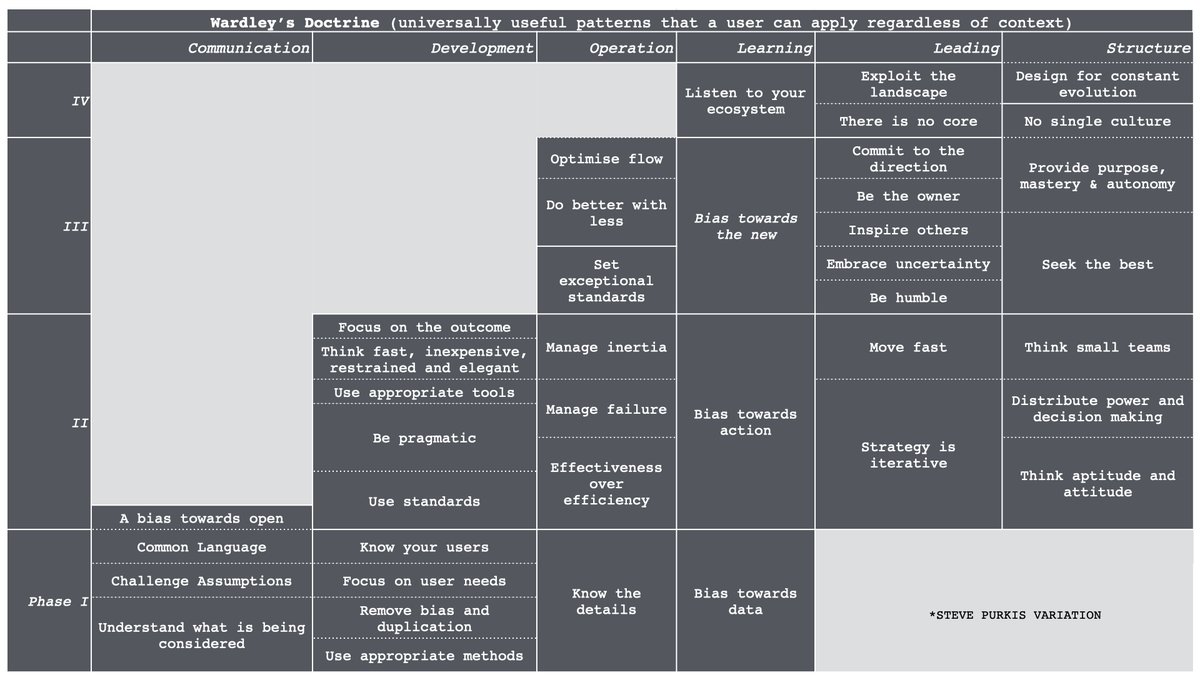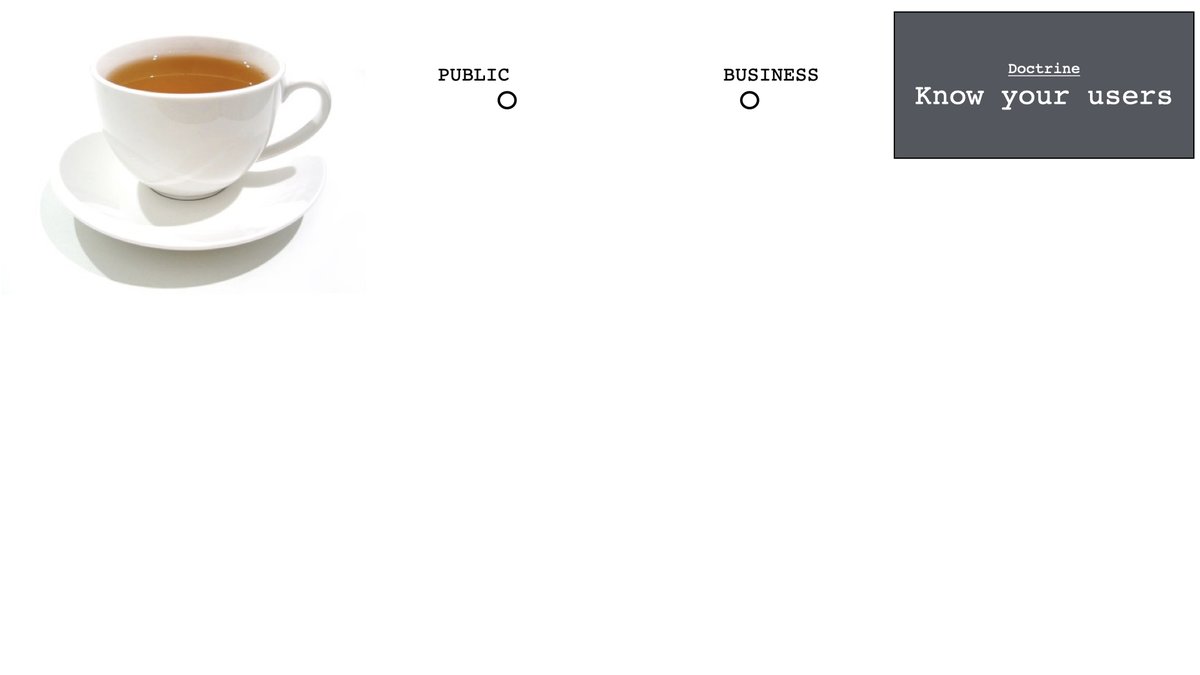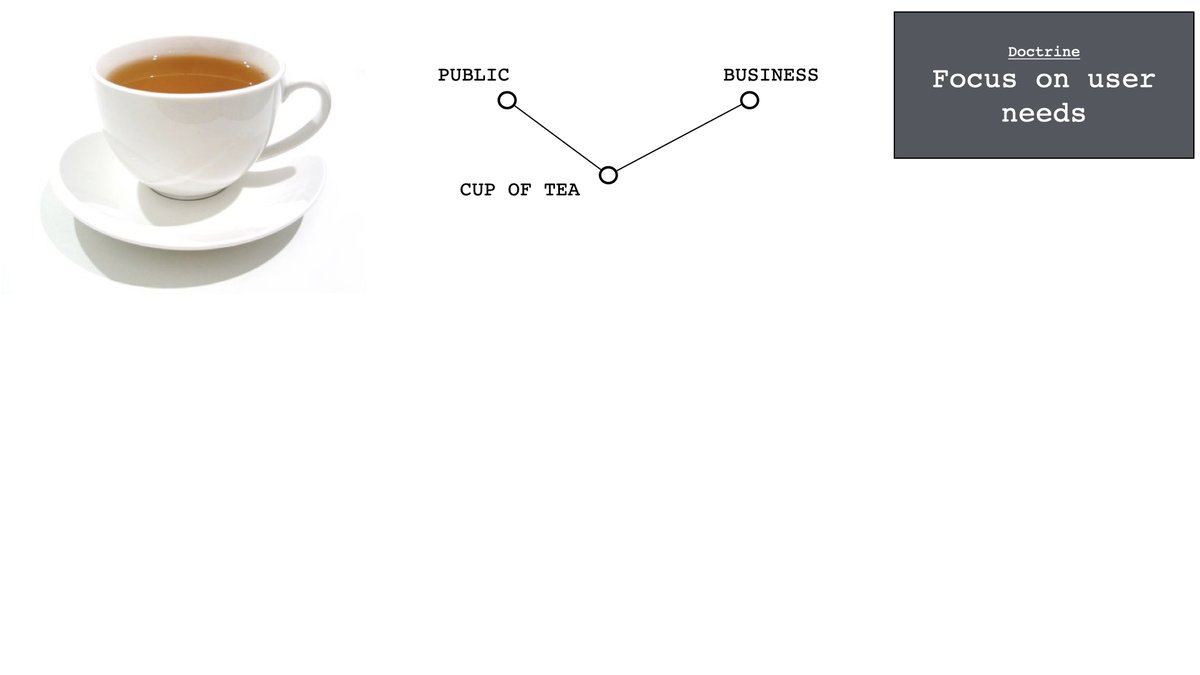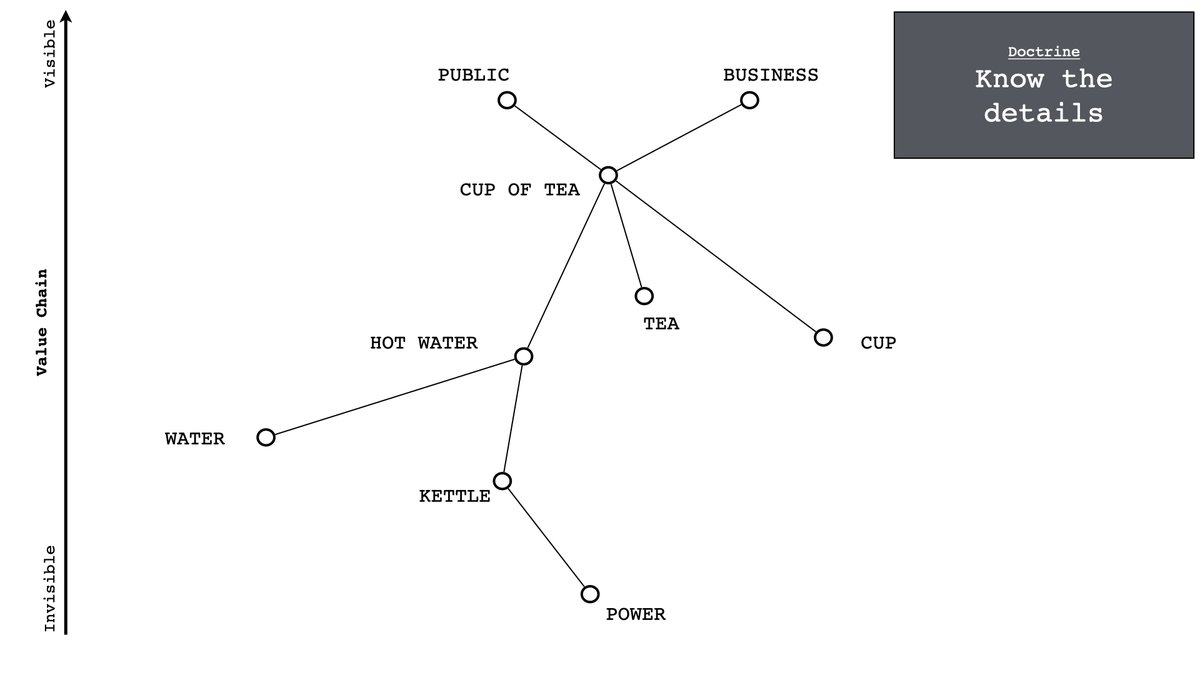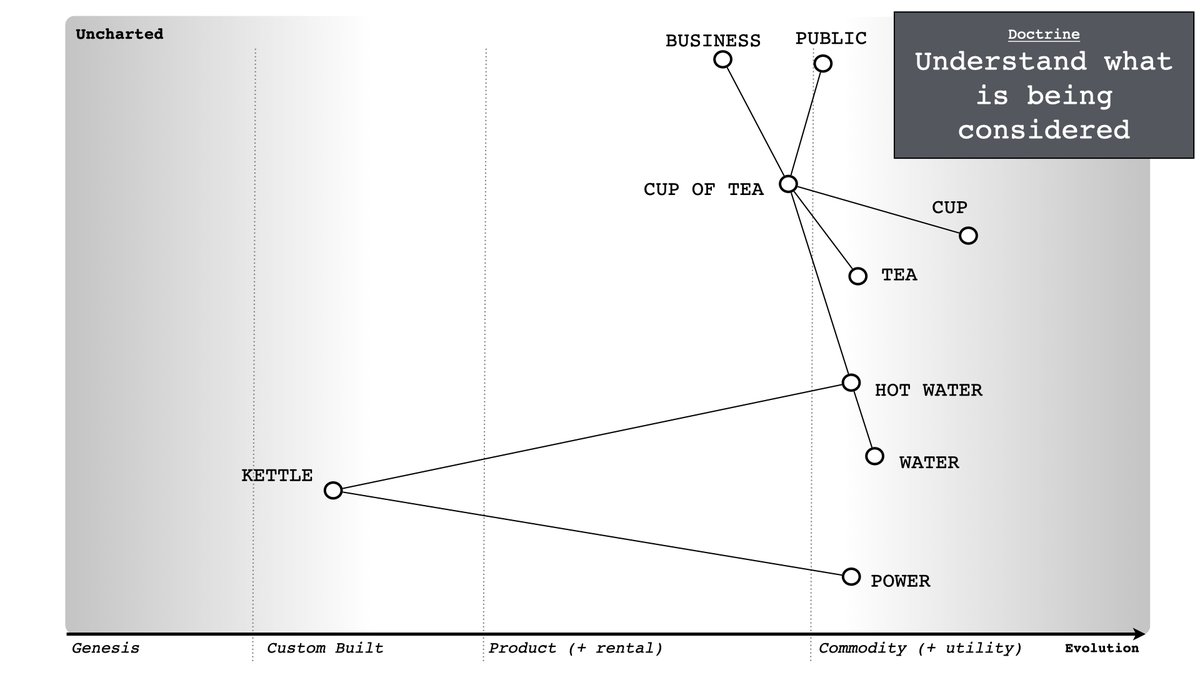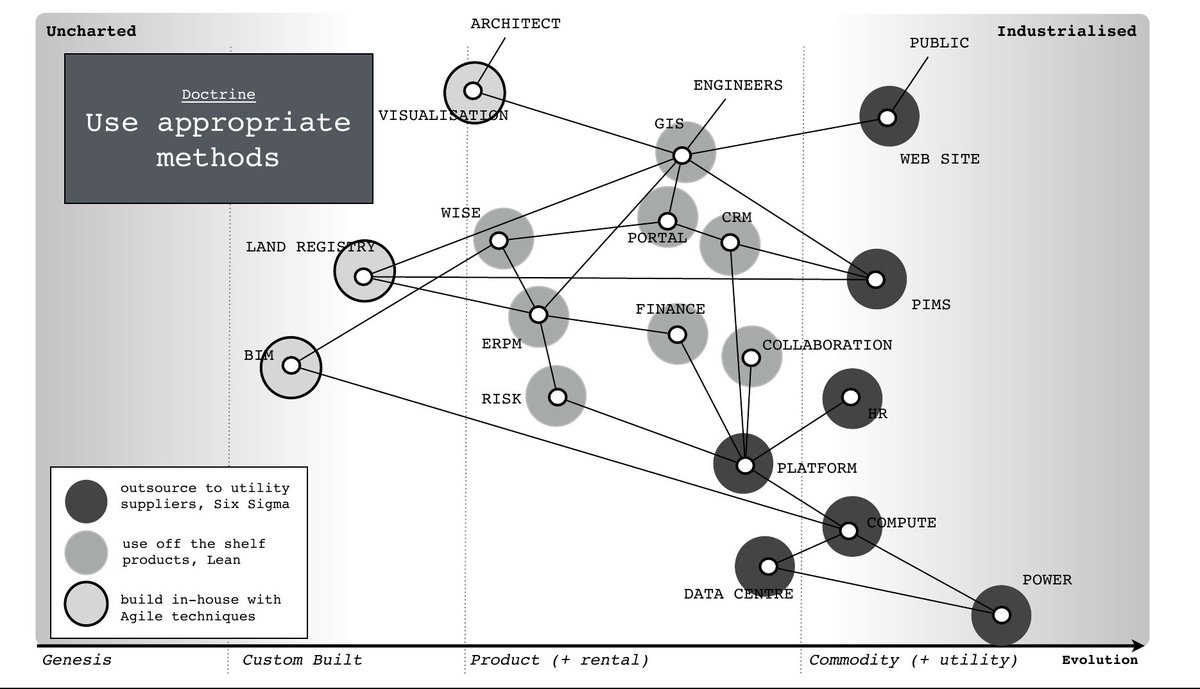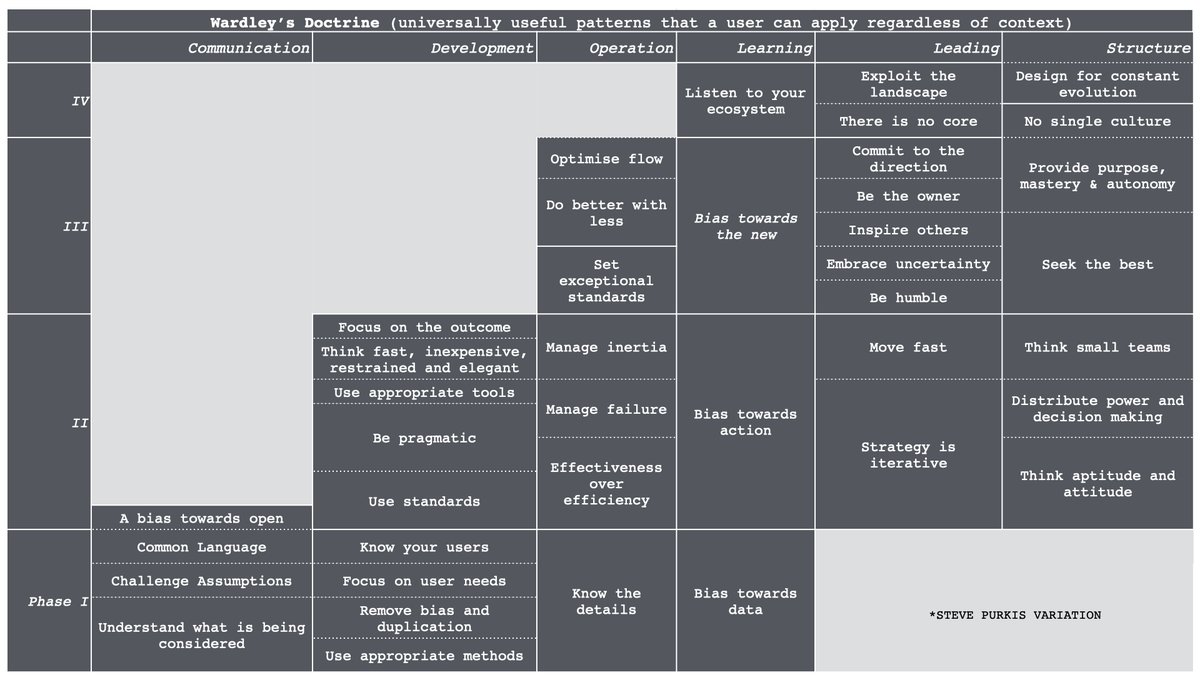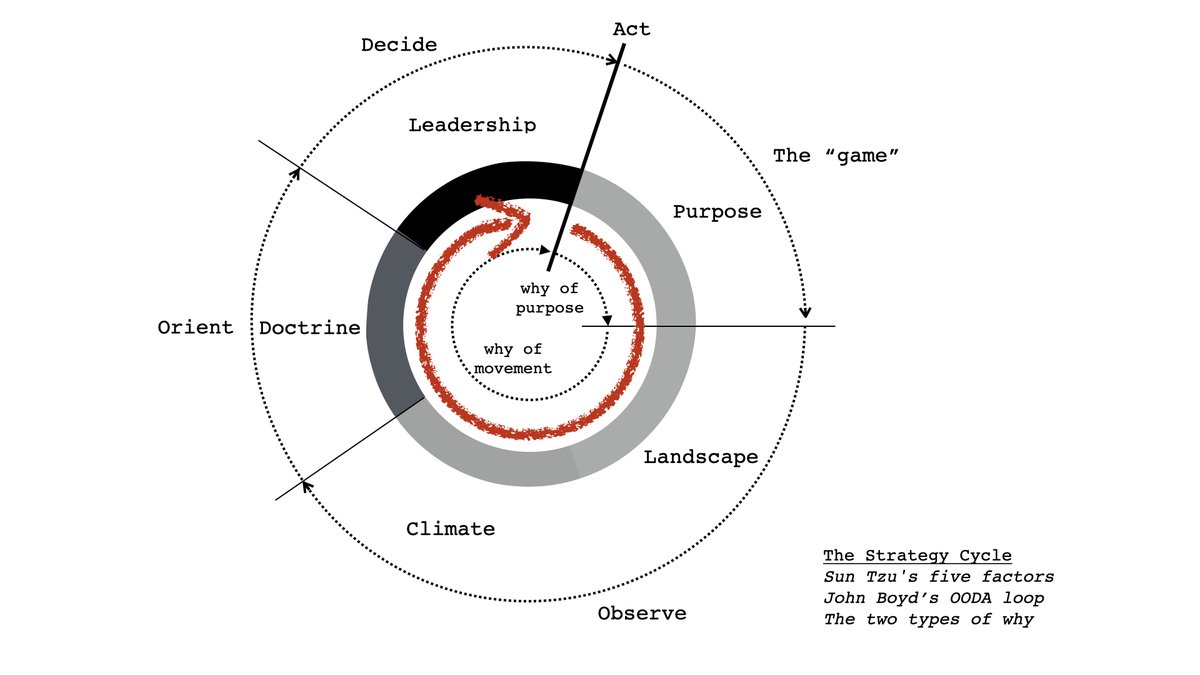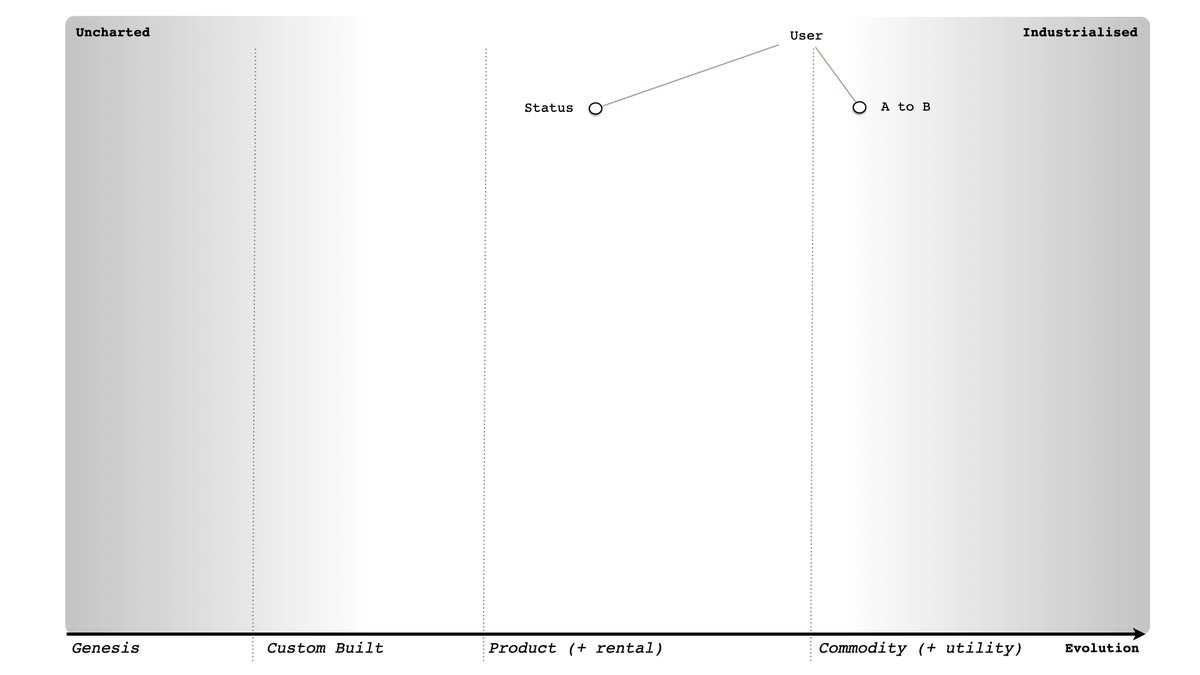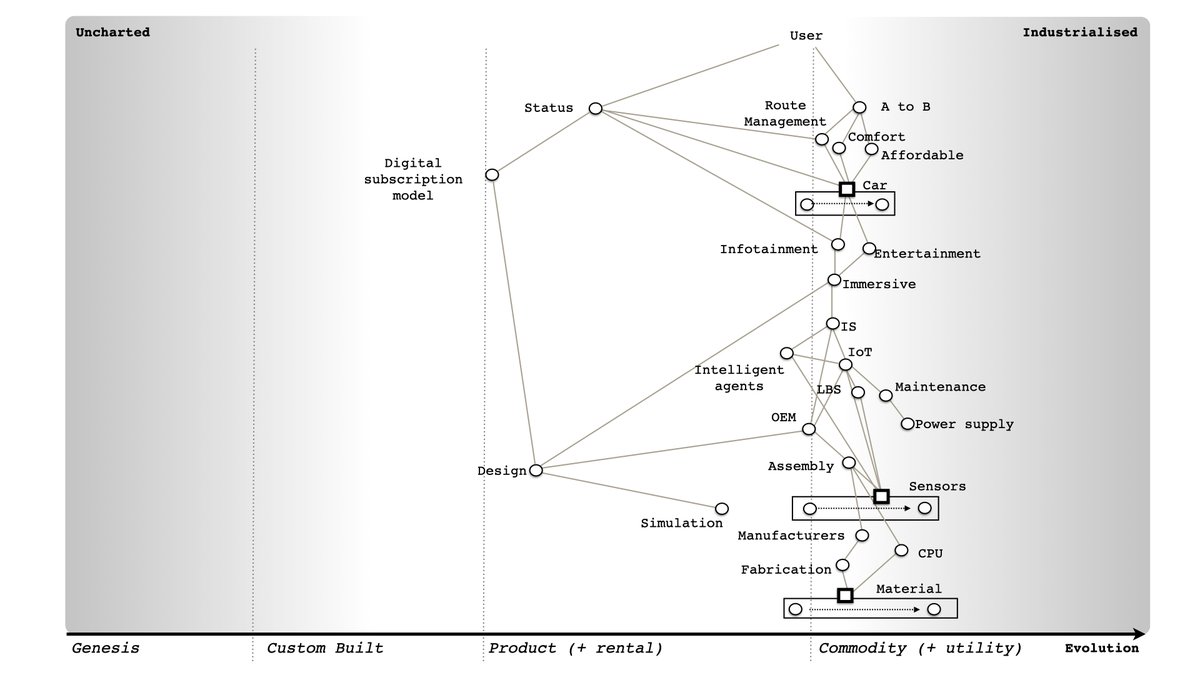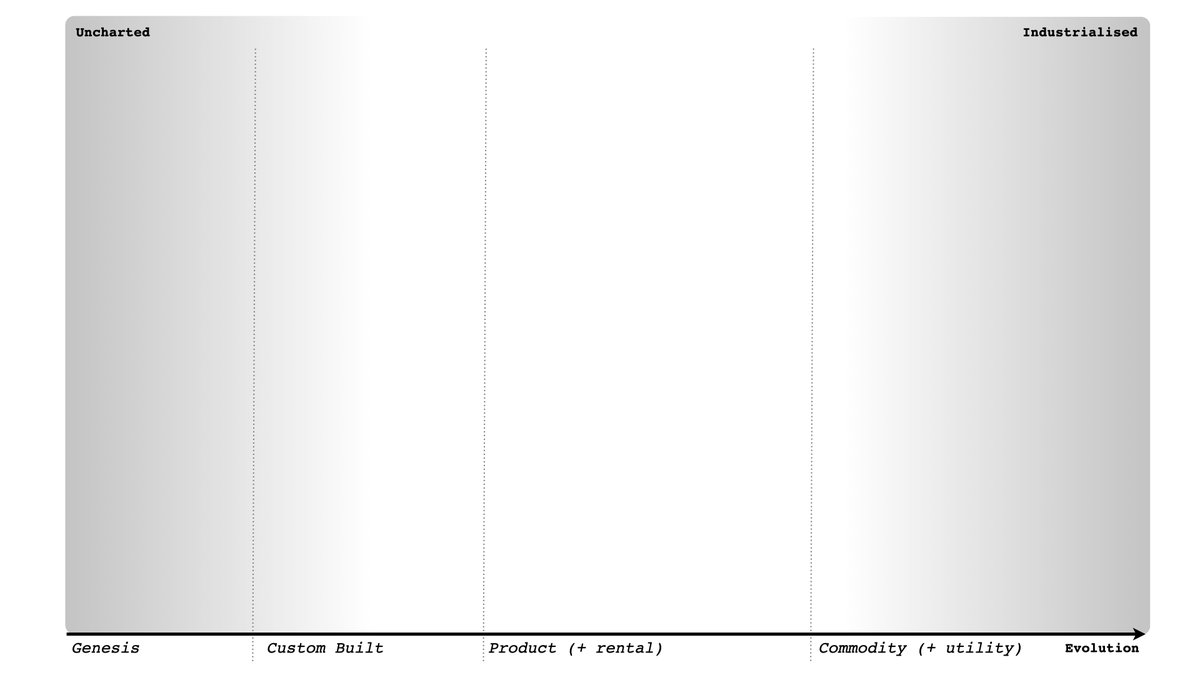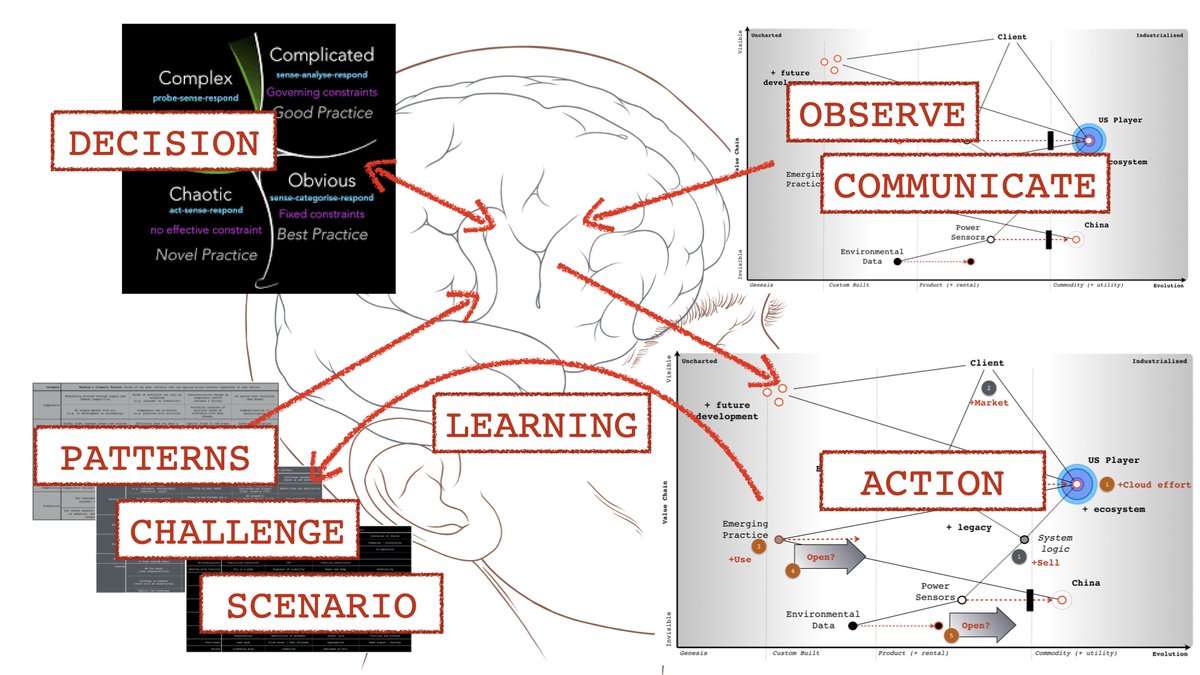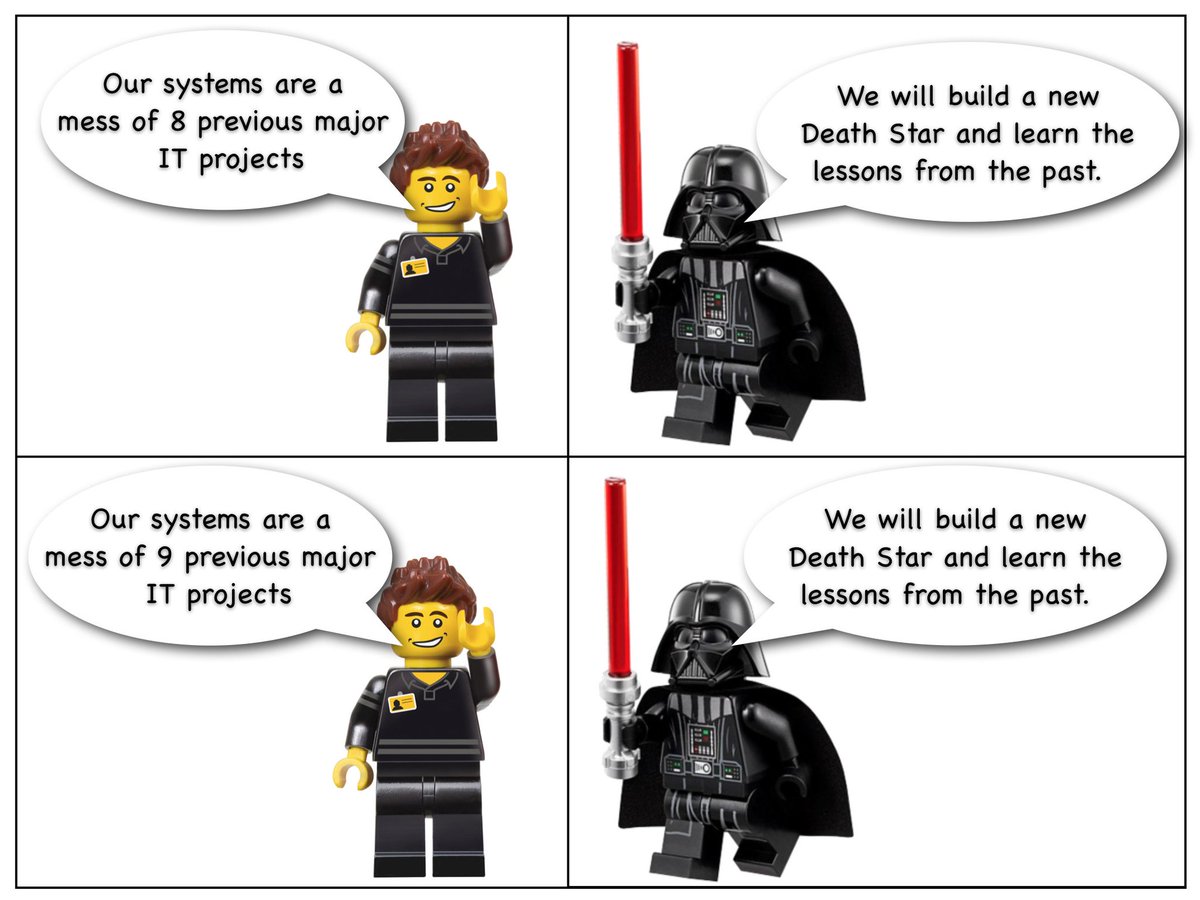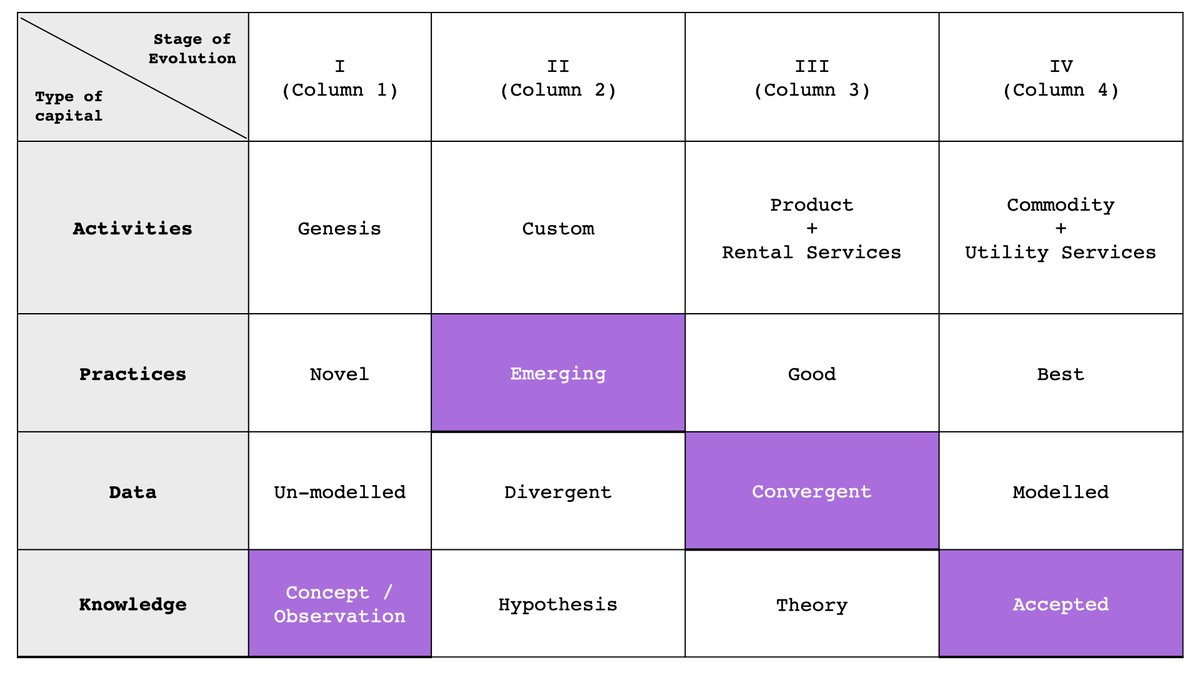X : Thoughts on digital transformation?
Me : Oranges?
X : Sorry, what?
Me : My thoughts exactly. What do you mean by digital transformation?
X : Being more digital.
Me : Heaven help us or more precisely you and your wallet.
X : Explain?
Me : Oranges?
X : Sorry, what?
Me : My thoughts exactly. What do you mean by digital transformation?
X : Being more digital.
Me : Heaven help us or more precisely you and your wallet.
X : Explain?
Me : Digital transformation isn& #39;t a thing. It& #39;s a meaningless term used to describe a whole bunch of things of which some may or may not be related.
X : I& #39;m confused.
Me : You& #39;re supposed to be ... easy pickings. Let us start simply ...
X : I& #39;m confused.
Me : You& #39;re supposed to be ... easy pickings. Let us start simply ...
Me : Have you seen my doctrine table?
X : No.
Me : OK, start there. Phase I - understand users, focus on user needs etc.
X : When does the digital come in?
Me : It may not ...
X : No.
Me : OK, start there. Phase I - understand users, focus on user needs etc.
X : When does the digital come in?
Me : It may not ...
... think of your business like a tea shop (well, they& #39;re businesses, quite competitive ones actually). Start by understanding who the users are ...
... then understand what those users need (i.e. public needs a cup of tea, business needs to sell a cup of tea etc) ...
... then understand how evolved those components are. This is called a map.
X : But I want to know about dgitial not maps.
Me : Ok ...
X : But I want to know about dgitial not maps.
Me : Ok ...
... in the provision of needs to others or needs that you have in creating your own value chain then in many cases it makes far more sense to use online services especially utility like services. What digital transformation means will depend upon your map and your context.
So, without that context then the answer to digital transformation is .. oranges or bananas or plums or ... pick any old fruit, it doesn& #39;t matter.
X : Digital is more than using or providing online services, it& #39;s also being agile, organisation and culture.
Me : You& #39;ve been reading too much HBR. Go do something educational - Captain Underpants is pretty good.
X : What?
Me : Look. Once you map, you quickly learn that ...
Me : You& #39;ve been reading too much HBR. Go do something educational - Captain Underpants is pretty good.
X : What?
Me : Look. Once you map, you quickly learn that ...
... there is no such thing as one size fits all. An agile organisation is one that use appropriate methods. Using an Agile method (i.e. XP) everywhere won& #39;t make you an agile organisation, quite the opposite ...
... when it comes to structure then that& #39;s a complex topic far beyond most execs but it& #39;s unfortunately the easiest lever to reach for. It& #39;s like shifting the deckchairs on the Titanic, it never solves the problem. Better to leave structure alone and start with principles ...
... even poor old Spotify has to regularly remind people that it doesn& #39;t organise itself in the "Spotify" model that management consultants regularly sell. Even Spotify say copy their principles not their structure ...
... as for culture, after over 100 years even anthropologists (and they& #39;re the experts) can& #39;t agree on what culture is. A tough subject randomly thrown around often as an excuse.
X : Excuse?
Me : Yep for failure of a "blessed" strategy. It was execution or culture wot dunnit.
X : Excuse?
Me : Yep for failure of a "blessed" strategy. It was execution or culture wot dunnit.
Start simple. Think about those principles - users, user needs, value chain, map ... understand your landscape, use appropriate methods etc.
Get sucked into grand digital transformation strategy, agile everything, spotify and culture and you& #39;ll spend a fortune going nowhere.
Get sucked into grand digital transformation strategy, agile everything, spotify and culture and you& #39;ll spend a fortune going nowhere.
X : It& #39;s also about being a data driven organisation.
Me : You seem to want to lose money? I was on the advisory board for Strata, years of looking at data submissions ... I& #39;ve seen many spend fortunes on building data lakes to only now go - "when does the money appear?" ...
Me : You seem to want to lose money? I was on the advisory board for Strata, years of looking at data submissions ... I& #39;ve seen many spend fortunes on building data lakes to only now go - "when does the money appear?" ...
... there can be real value in data (I can think of one effort which saved about £16Bn) but again, you need to think about the needs, components, map and think about what you& #39;re trying to do. Don& #39;t just copy a meme, spend a fortune and ask later - "when does the ROI roll in?"
Me : Think about the landscape and what you& #39;re trying to do. As you get good at the whole strategy cycle then you can get into the gameplay bit but don& #39;t rush there. It& #39;s a tricky space i.e. sometimes there are legitimate reasons for spending fortunes on PR exercises.
X : Are you saying digital transformation is a PR exercise?
Me : I& #39;m saying that depending upon your landscape then that might be a legitimate play. First though, try and understand your landscape.
Me : I& #39;m saying that depending upon your landscape then that might be a legitimate play. First though, try and understand your landscape.
X : I find you maps complex.
Me : Ok. This is a simple map. I& #39;m not saying the components on it are simple just the map is ...
Me : Ok. This is a simple map. I& #39;m not saying the components on it are simple just the map is ...
... this is a complicated map. Again, I& #39;m not saying the components on it are simple or complicated, just the map is complicated ...
Me : The components on the map can exhibit simple, complicated or complex behavaiour, for example. A single node can represent an entire map itself.
X : What about chaotic?
X : What about chaotic?
Me : Chaos is in all the space, in all the relationships you can& #39;t see or can& #39;t describe, in all the components you don& #39;t know anything about or may never be able to know. If you want to see a map of chaos then this is the best map that I have ...
... the act of mapping is the act of describing some sort of order to the chaos you first perceived, it& #39;s an act of trying to understand the landscape, some of which you can never know. It& #39;s an imperfect process that is ultimately wrong (being a model) but it has uses.
It enables you to share your perception and assumptions with others, it allows others to challenge the map and to add their perceptions.
X : How does it tell me what to do though?
Me : It doesn& #39;t beyond general things like use universally useful principles ...
X : How does it tell me what to do though?
Me : It doesn& #39;t beyond general things like use universally useful principles ...
To work out what you need to do requires more than patterns. For that you need to apply thought, you need other mechanisms like Cynefin. The best way I can describe it is as follows ...
... i.e. I can have a situation that is described through a quite complicated map that is well known, whose components can have various characteristics but numerous scenarios have been well practised, well understood and the actions needed have become obvious.
X : Isn& #39;t your blank map a map of disorder?
Me : The simplest way I can describe disorder in mapping terms is not with a blank map but with a blank piece of paper where we can& #39;t even agree on the framing of the landscape let alone what is in it.
Me : The simplest way I can describe disorder in mapping terms is not with a blank map but with a blank piece of paper where we can& #39;t even agree on the framing of the landscape let alone what is in it.
X : Complexity arises from the interactions of simple/complicated components.
Me : Every node on a map is a map. Those nodes can have various behaviours ditto the map itself.
Me : Every node on a map is a map. Those nodes can have various behaviours ditto the map itself.
X : In your map, why is the kettle custom built?
Me : Exactly. The point of a map is you should be able to challenge the assumptions that are made upon it.
How many tens of $billions in IT are wasted custom building that which is already a commodity?
Me : Exactly. The point of a map is you should be able to challenge the assumptions that are made upon it.
How many tens of $billions in IT are wasted custom building that which is already a commodity?
X : If you observe the digital world around you and have a curious & innovative mindset, you know what to do.
Me : The digital graveyard is rapidly expanding.
Me : The digital graveyard is rapidly expanding.
Ok, so someone must have produced a #digital #graveyard list but just in case, let us hear the candidates ...
... near the top of the list must be GE. Who else?
... near the top of the list must be GE. Who else?
X : Sell the story, not the product.
Me : Yep, that& #39;s why IT is full of custom built kettles. People being sold on stories without looking at the landscape.
Me : Yep, that& #39;s why IT is full of custom built kettles. People being sold on stories without looking at the landscape.
X : Is this a specific problem to IT.
Me : Oh no, the business side tends to be far worse. It& #39;s just the IT side is more willing to talk about the issues, face up to reality.
Me : Oh no, the business side tends to be far worse. It& #39;s just the IT side is more willing to talk about the issues, face up to reality.
X : There is no business or IT side, it& #39;s the same thing.
Me : Fine words but normally only spoken on the business side when success is happening. When there& #39;s failure then it rapidly becomes an "IT problem".
Me : Fine words but normally only spoken on the business side when success is happening. When there& #39;s failure then it rapidly becomes an "IT problem".
X : Why do companies get this wrong?
Me : Do you mean why do execs make choices, take action without understanding the landscape they are operating in?
X : Yes
Me : Ashby& #39;s law of requisite variety.
X : Eh?
Me : Do you mean why do execs make choices, take action without understanding the landscape they are operating in?
X : Yes
Me : Ashby& #39;s law of requisite variety.
X : Eh?
Me : Basically, the controlling element of a system must have as much complexity as the inputs and outputs of what is being controlled.
X : Not helping.
Me : Ok ...
X : Not helping.
Me : Ok ...
In practice, business is a mixture of the simple, the complicated, the complex and the chaotic. In order to "manage" this then you either have a management system capable of coping with it or ... you pretend that reality is simple i.e. KPIs, 2x2s etc ...
... when someone says in management that "this is too complex", that doesn& #39;t mean that what you& #39;re doing is not a more accurate representation of reality, it can often mean that you& #39;re reached the limit of capability of your management system ...
... it& #39;s why we boil things down to 2x2s, to KPIs, to "nice stories" ... the old silent "f" in KISS - keep it simple, (for) stupid.
This works in competition with others as long as everyone does the same thing. If we all pretend reality is simple then no-one gains an advantage (Prof. Valen, Red Queen Effect). Problems start when someone stops pretending reality is simple because they gain a huge advantage.
X : Then we adapt?
Me : When we can longer avoid it, we look for the new "secrets of success", the new one size fits all (i.e. simple) methods and we say our new Death Star will learn the lessons of the past, we undergo ... "transformation" ... kaboom.
Me : When we can longer avoid it, we look for the new "secrets of success", the new one size fits all (i.e. simple) methods and we say our new Death Star will learn the lessons of the past, we undergo ... "transformation" ... kaboom.
X : You are saying most digital transformations are building a new Death Star.
Me : Most "transformation" efforts that don& #39;t consider the landscape and use simple secrets of success (agile everywhere, spotify that org) create new death stars to go along with the past remnants.
Me : Most "transformation" efforts that don& #39;t consider the landscape and use simple secrets of success (agile everywhere, spotify that org) create new death stars to go along with the past remnants.
X : What other x-axis have you used?
Me : X-axis should say stage I to IV but that& #39;s meaningless. So, I use labels which come from text analysis. You can pick any one label from any stage to represent that stage i.e. I use the following when mapping ethical values.
Me : X-axis should say stage I to IV but that& #39;s meaningless. So, I use labels which come from text analysis. You can pick any one label from any stage to represent that stage i.e. I use the following when mapping ethical values.
That text analysis also created the cheat sheet ... it& #39;s all coherent within the model. Step outside those labels and ... well, I don& #39;t know. The cheatsheet won& #39;t work, the patterns (climatic, doctrine) etc may not work.
Friends of mine have also built other views of mapping using those labels i.e. maturity mapping by @somesheep and @chrisvmcd

 Read on Twitter
Read on Twitter